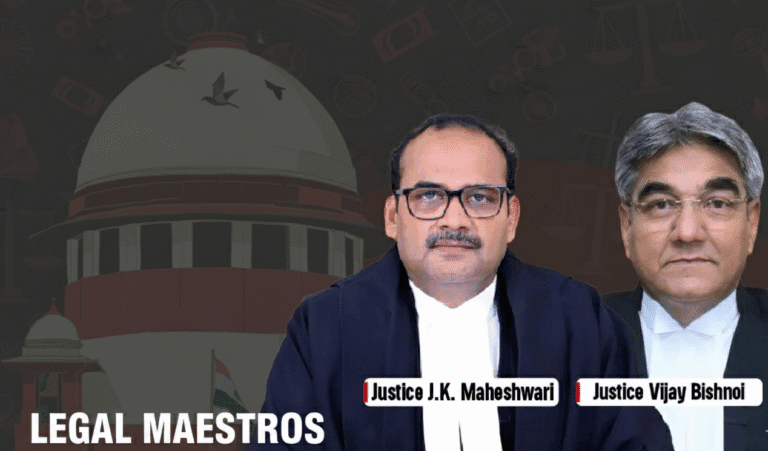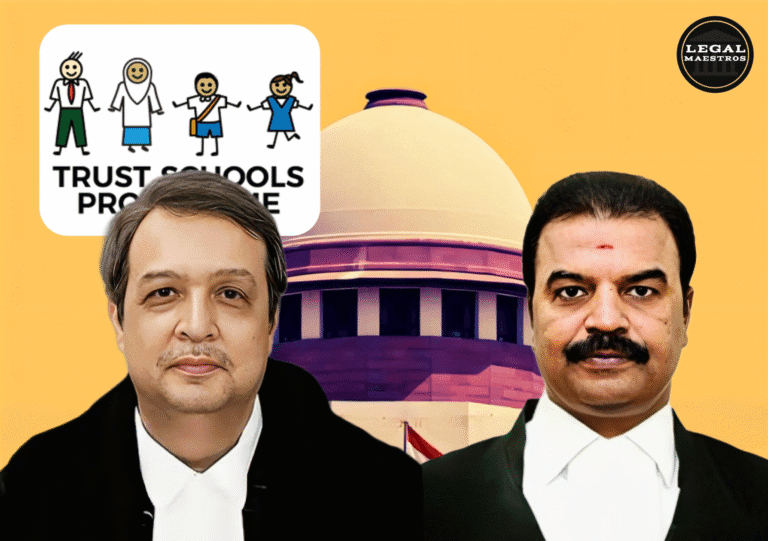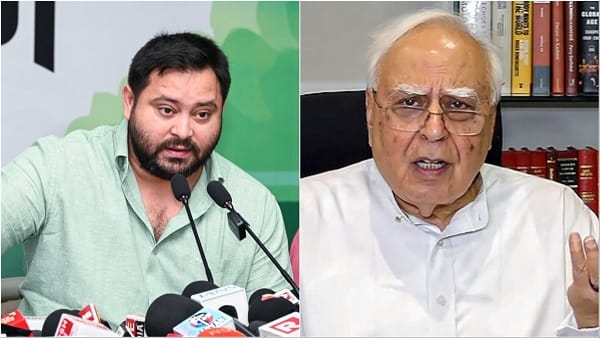
A very recent public power judgment passed by the Supreme Court of India dealt with the admissibility of secretly recorded conversations between the spouses in matrimonial disputes. In this decision, the court answered important questions of the law of evidence, right to privacy and authority of Family Courts, especially in the context of a proceeding on divorce. It is a case of a husband who wants to use the tape-recorded conversations of his wife in a court of law; this case brings into fore the interaction between the personal freedom and the right to a fair trial in personal issues.
Case factual background
This case was backed by a divorce which was filed by a husband against his wife in the year 2017. In the proceedings, the husband (respondent) requested permission to file the additional affidavit (comprising national small memory cards, compact disc ( CD), and transcript of telephonic conversation that had been recorded by the husband between November-December 2010 and August-December 2016, respectively). He claimed that these tapes had pertinent divorce conversation in them. The Family Court first admitted this evidence by quoting Section 14 of the Family Courts Act, 1984, according to which Family Courts have flexibility in accepting any evidence in resolving the disputes. As observed by the Family Court, the conversations were held between the parties themselves and not by a third-party, and that there was no sign legal objection against admitting tape recordings provided that they were accurate.
But this ruling was refuted by the wife in High Court of Punjab and Haryana. The High Court held in favour of the wife and established that the recording of the conversation incurred by the husband surreptitiously with her unawareness and without her consent was a violation of her right of privacy which is a root right as enshrined in Article 21 of the Constitution of India. The resultant effect was that the husband turned to the Supreme Court to challenge the ruling of the High Court.
For any queries or to publish an article or post or advertisement on our platform, do call at +91 6377460764 or email us at contact@legalmaestros.com.
Main Lawful Provisions that were reviewed by the Court
The discussion by the Supreme Court was majorly based on the three important legal provisions:
Indian evidence act 1872 section 122
There is the section of “Communications during marriage”. According to it, a married person may not be forced or even allowed to reveal any communication to him made to him by his spouse during marriage except the spouse who gave the communications agrees. But here presents a further, all-important exception: that it is a protection which does not extend to “suits between persons married to each other, or in which a married person shall be a prosecutor against another of the same condition and under indictment for any offence committed against such other”.
The two portions of Section 122, which were highlighted by the Supreme Court, were as follows: one on compellability (not the act of compelling the disclosure, i.e. not forcing), and another that involved permissibility (not the act of permitting the disclosure, i.e. not permitting). The second part exception covers specifically the litigation between spouses. This implies then that in divorce litigation contexts the right to confidential spousal communication is not an absolute right and as such the disclosure of such communications is still permissible.
The family Courts Act, 1984 sections, 14 and 20
Family Courts are enabled under section 14 of the Family Courts Act to admit any piece of evidence, a statement of fact, or documents that holds the potential to help in determining a dispute, the pieces of evidence may be out of the strict rules of proof. Section 20 gives Family Courts Act an overriding mandate effect on the general rules of evidence. Although the family court relied on these provisions in the early days, the supreme court made it clear that when there is the exception in the Evidence act itself which allows the reception of certain piece of information there is no need to exercise the extraordinary powers of Section 14 of the Family Courts Act.
Article 21 of Indian constitution: The Right to Privacy
The right to privacy is (one of) the major areas of dispute, as Article 21 of the Indian Fundamental Rights guarantees the right to life and liberty of (personal) citizen or individual. The high court held that the use of secretly recorded conversations was contrary to the right to the privacy of the wife. However, the Supreme Court made a thorough consideration of the right to privacy within the Section 122. It recognized that right to privacy is not always absolute, and it should be balanced against the right to fair trial. According to the Court, Section 122 itself admits and upholds the privacy of spouses but the exceptions stated in it also should be allowed. The Court again reiterated that the right to privacy in Article 21 is an enforceable right mainly against the State and even though it can in some cases be enforced against non-state actors there exists an exception made under Section 122 of the Evidence Act since it specifically excludes communications in suits between husband and wife and therefore no right to privacy exists in such a situation.
The Main Problem: Admissibility or Privacy
The question was to establish whether tapes that are secretly recorded between the spouses can be used as evidence. The Indian High Courts had assumed opposite positions on this case. Such recordings had been denied by some High Courts with a note that it is a breach of privacy to record a conversation without the consent of the participants. They stated that courts cannot determine the conditions, in which such statement was expressed and that disguised recordings break trust in marriage. Such evidence however had been allowed in other High Courts, considering that the other matrimonial evidence may not be so easily available.
Such an amicus curiae (friend of the court) in the case was proposing what Family Courts should do in terms of the admissibility of the audio/video recordings. Some of these factors were that, there was a direct relationship between the recording and the fact of the case, there was the intention of putting the records on record, the burden of proving it as the least intrusive means, context will be carefully considered, the socio-economic factors that will affect the recording capacity, and also, that there was authenticity of the records. The amicus as well raised issues regarding protection of privacy in the process of filling and securing such sensitive content.
SAnalysis and decision of supreme Court
The Supreme Court made a thorough discussion on Section 122 of the Evidence Act and it was realized that the prime idea of this section is to guard the sanctity of marriage rather than the absolute right to privacy that would be superseded by the exception to this section. The Court held that in an action between married people as indicated in Section 122, the communication is not privileged, and hence the right to privacy is not an issue of consideration during this situation.
The Court has also referred to admissibility of electronic evidence under Section 65B of the Evidence Act according to which, electronic records are held to be admissible under such conditions are inclusive of provisions of production of electronic records by the computer. The Court reiterated the fact that technology has simplified the process of recording and replaying the events and the related electronic evidence must not be disregarded on the basis of its privacy breach, especially in those cases where it is the most strongest evidence.
The Supreme Court eventually quashed the order passed by the High Court and upheld the order of Family court and accorded the husband the leeway to file his supplementary affidavit together with the tapes of conversations. The Court instructed the Family Court to record them and use them as a piece of evidence as prescribed by the law.
This is a significant order of the Supreme Court in relation to Indian matrimonial law. It explains that even though the right of privacy is inherent he does not apply it in inter-spousal cases especially with relation to the communication as long as it is during the marriage in this case there is a special exception to Section 122 of the Indian Evidence Act. The decision highlights the efforts of the judiciary to guarantee fair hearing in cases as it permits the use of relevant evidence in matrimonial matter, which is secretly acquired using own tests relating to admissibility and authenticity. In this ruling, the concept of changing evidence in the digital era in addressing complicated individual conflicts is taken note of.








2 thoughts on “Supreme Court Bench Led by Justices B.V. Nagarathna and S. C. Sharma Allows Phone Recordings in Divorce Cases: Privacy Rights Not Absolute Between Spouses”